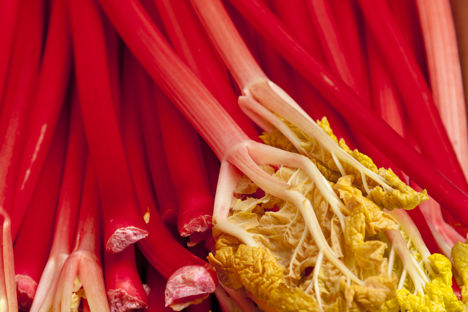
What's in season: January
Christmas is probably now a distant memory and a new year has begun, back to school and back to work. Leftover turkey sandwiches and mince pies aside, Sally Abé tells us what is good to eat in January.
What's in season: January
Christmas is probably now a distant memory and a new year has begun, back to school and back to work. Leftover turkey sandwiches and mince pies aside, Sally Abé tells us what is good to eat in January.
January, the month of new beginnings, resolutions and (if your Christmas was anything like ours) diets. Most people will have overindulged during the festive period, emerging the other side of it a little worse for wear and swearing off alcohol, fatty foods and sugar for good – or the next couple of weeks, at least! However it’s not all doom and gloom; kale smoothies and protein balls aside there is a wealth of lovely fresh produce to look forward to in January.
While we can rely on British soil for vegetables, meat and fish there are no new homegrown fruits in season at this time of year, with the majority of this month’s fresh crop coming from neighbouring countries with warmer climates. January sees the start of the vast citrus season from Europe and further afield, with blood oranges, Seville oranges and bergamot all starting to appear. For a simple starter or easy lunch try Franceso Mazzei’s vibrant Burrata and blood orange salad or for a zingy dessert Galton Blackiston serves Blood orange mousse with blood orange sorbet. Look out for more unusual fruit such as bergmot, the fragrant yellow citrus used to make Earl Grey tea which David Everitt-Matthias puts to excellent use in his Bergamot parfait recipe served with orange jelly and liquorice cream, and the striking yellow citrus known as Buddha’s hand. The latter, so named because of its resemblance to a human hand, is perfect for preparing candied fruit and can commonly be found in China and Japan.
Forced rhubarb also begins in January, the majority of which is grown in Yorkshire’s ‘Rhubarb triangle’ after being awarded Protected Designation of Origin status in 2010. Quintessentially British, this bittersweet vegetable is commonly paired with sweet, creamy flavours such as warming crumble or rhubarb and custard, that much-loved nostalgic dessert. For a slightly more elegant take on a rhubarb dessert try Victoria Glass’ Rhubarb and custard panna cotta or Dominic Chapman’s Orange posset with rhubarb, and take a look at our guide on how to cook rhubarb for tips on buying and cooking.
Vegetables in January are still mostly roots such as potatoes, parsnips, parsley roots, chervil roots and swedes. For a real winter warmer try Adam Gray’s Steamed mutton and onion suet pudding with crushed swede or for something a little lighter Emily Watkins uses Pink fir apple potatoes in her Soused herring with heritage potato, celery salad and bloody mary sauce.
New season leeks begin to hit the shelves in January, just in time for hearty bakes and stews. Marcus Wareing’s homely Leek crumble makes a great vegetarian main course option while Martin Wishart’s Leeks vinaigrette with eggs mimosa would make a simple but impressive starter.
Fish can still be scarce this time of year, but the best to look out for this month are pollock and whiting. Nathan Outlaw’s Whole whiting with crab sauce and jerusalem artichokes is delicious and impressive or try using pollock as a cheap and flavoursome alternative to cod in Simon Hulstone’s Fish pie with tartare sauce or the Galvin Brothers Fish finger BLT.
January is sadly the last month of game season for wild birds, although on the plus side prices will be low so take the opportunity to stock up for game pies, stews and casseroles. For the best winter has to offer try Shaun Rankin’s Roast pheasant with orange marmalade or Galton Blackiston’s Partridge with pears and stuffing.


